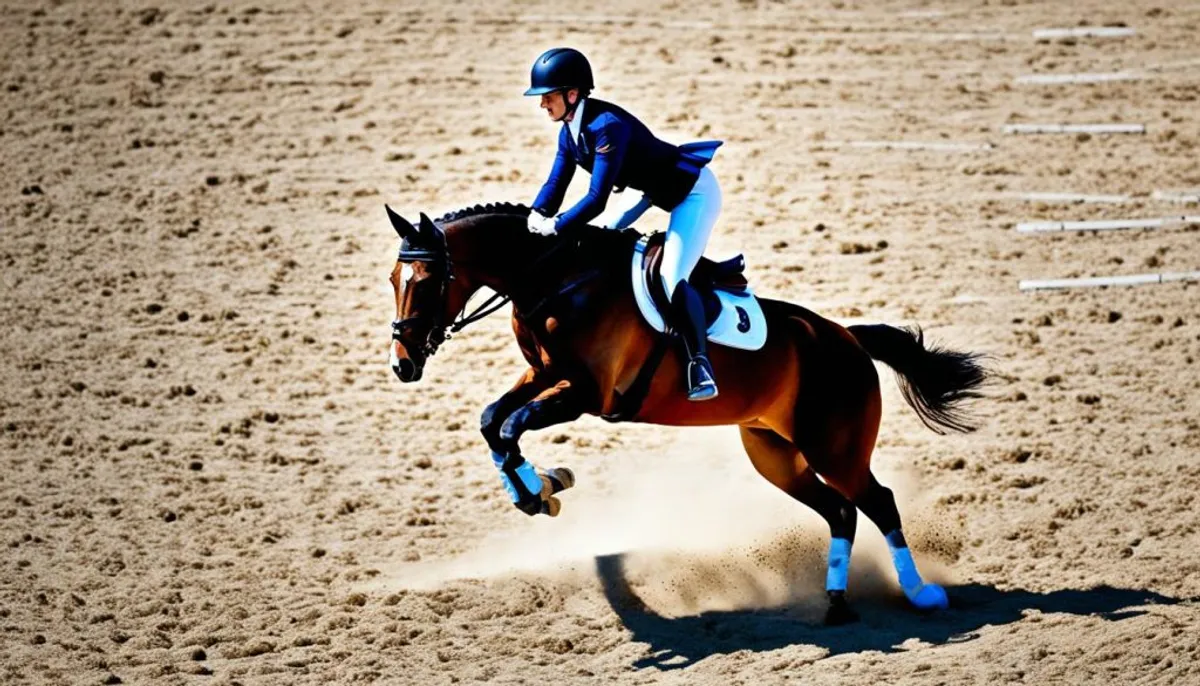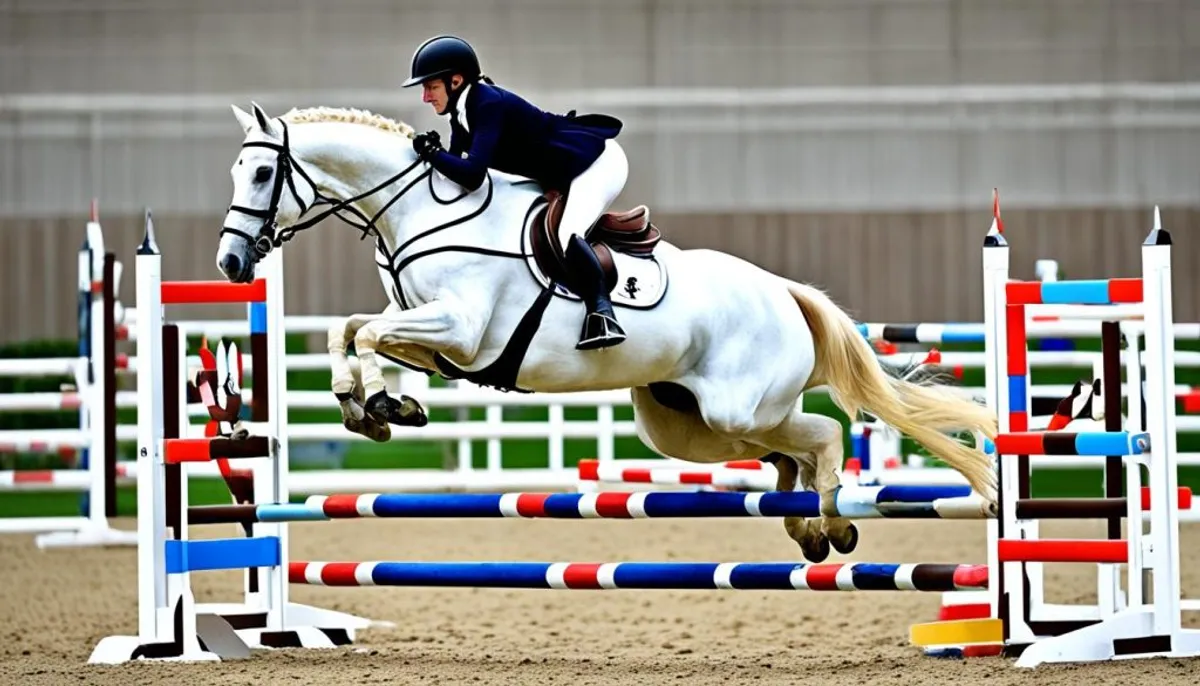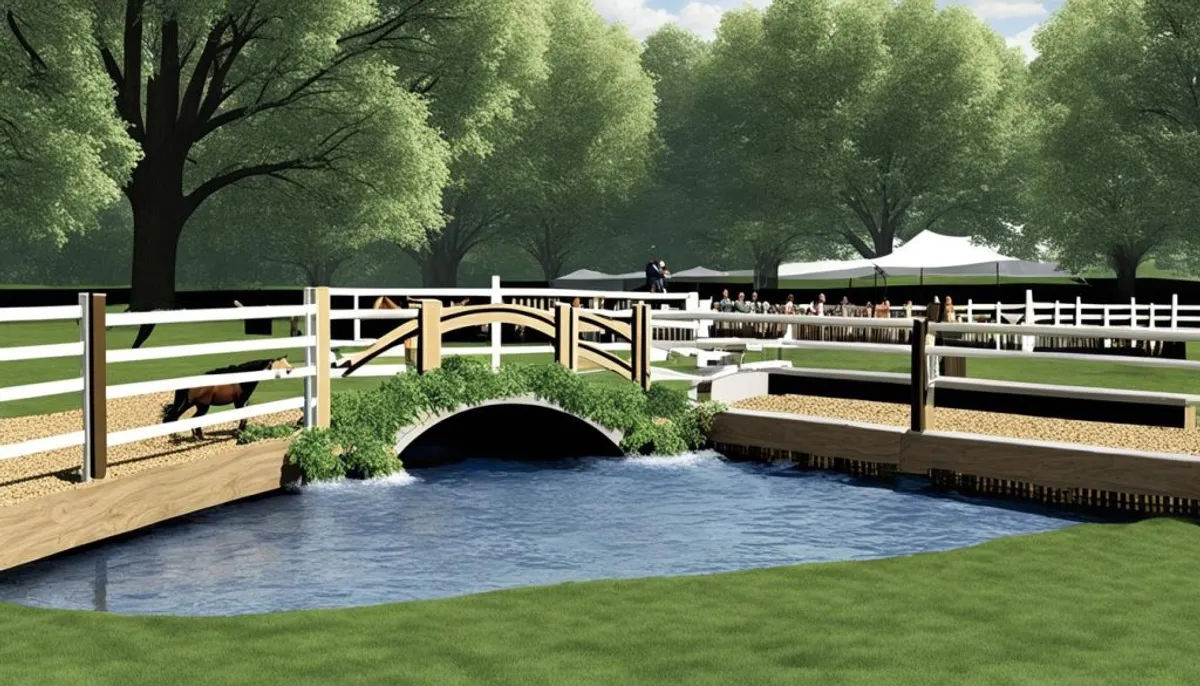Equestrianism, especially show jumping (SJ), is thrilling. It combines agility, power, and precision between the rider and their horse. To excel, one must know the obstacles encountered. They vary in height, width, shape, and nature, presenting unique challenges.

Key Points to Remember
- The SJ is an Olympic discipline showcasing the symbiosis between the rider and their mount
- Obstacles vary in height, width, shape, and nature, each representing a specific challenge
- Understanding the different types of obstacles is essential for shining in competition
- Vertical obstacles, wide ones, water jumps, ditches, combinations, and lines of obstacles are all challenges to overcome
- Mastering these obstacles allows riders and their mounts to demonstrate their dexterity, power, and precision
Introduction
The SJ, or show jumping, is very important in equestrianism. It is one of the major equestrian sports in the Olympic Games. This discipline requires a good partnership between the rider and their horse. They must clear obstacles of various sizes and shapes within a given time.
What is SJ?
The SJ, or show jumping, is a competition where the rider and their horse navigate a course with obstacles. These obstacles include bars, water jumps, and ditches. The rider and their horse must avoid knocking down the bars and exceeding the allotted time.
The obstacles are designed to assess the skills of the rider and their horse. They test their precision, agility, and concentration. The goal is to finish the course as quickly as possible without making mistakes.
The SJ is a spectacular sport that attracts many fans. It is very popular during national and international competitions.
Vertical Obstacles
Vertical obstacles, or upright obstacles, are very common in show jumping. They consist of round bars resting on vertical pillars. This is one of the simplest yet most frequent challenges.
Riders may also encounter planks and barriers. Planks are flat bars, and barriers provide a wider surface. These obstacles test the horse's jumping height and require precise technique and strength.
| Type of Obstacle | Description | Difficulty |
|---|---|---|
| Upright Obstacle | Cylindrical horizontal bars supported by vertical pillars | Medium difficulty level |
| Planks | Flat horizontal bars supported by vertical pillars | Medium to high difficulty level |
| Barriers | Vertical obstacle with a wider surface | High difficulty level |
Vertical obstacles, whether upright, planks, or barriers, require coordination, balance, and power. They pose a significant challenge for horses and their riders.

Wide Obstacles
Riders must face wide obstacles, in addition to vertical ones. Among these obstacles are oxers and spas.
Oxers and Spas
An oxer is an obstacle made up of two upright bars. They are placed one behind the other. This makes the jump longer and more technical for the horse and rider.
Spas are spread obstacles. They have at least three levels of bars at different heights. To clear them, the horse-rider pair must have great technical mastery.
| Obstacle | Characteristics | Difficulty |
|---|---|---|
| Oxer | Two upright bars placed one behind the other | Longer and more technical jump |
| Spa | At least three levels of bars at different heights | High technical mastery required |
Water Jumps and Ditches
Water jumps and ditches are very important in show jumping. They make the courses more difficult, testing the technique and agility of riders and their horses.
The water jump is a small body of water with an obstacle to jump over. The horse must leap and land safely on the other side. This requires good control of balance and coordination.
The ditch is a ground-level obstacle or one beneath another obstacle. It makes the course more challenging by testing the horse's precision over different terrains.
- Water jumps require the horse to jump over a body of water, demanding excellent balance control.
- Ditches, as ground-level obstacles, add an extra dimension of challenge by testing the horse's ability to navigate through varying terrain levels.

Water jumps and ditches are captivating challenges for riders and their horses. They push them to demonstrate precision, agility, and coordination to clear them successfully.
Combinations and Lines of Obstacles
In equestrianism, combinations and lines of obstacles are essential. They require precision and understanding of the horse's stride.
A line of obstacles consists of several obstacles spaced 3 strides apart. This allows the rider to gain speed. The lines of obstacles can have doubles, triples, or quadruples.
A combination has obstacles spaced 1 or 2 strides apart. It requires great mastery to maintain rhythm. These combinations can also have doubles, triples, or quadruples.
Success in SJ depends on the ability to navigate these lines of obstacles and combinations effectively.
| Type of Obstacle | Number of Strides | Rider Requirements |
|---|---|---|
| Line of Obstacles | Minimum 3 strides | Mastery of trajectory and speed |
| Combination | 1 or 2 strides | Mastery of rhythm and cadence |
Conclusion
Success in show jumping depends on more than just the height and length of the obstacles. Speed, time, and terrain are also crucial. Major competitions, such as the Olympic Games, showcase the best riders and their techniques.
Show jumping requires a strong partnership between the rider and their horse. Mastering the obstacles, managing time and speed, and adapting to the terrain are essential skills to excel in this sport.
Show jumping is exciting, whether you are a beginner or an expert. It combines technique and beauty, captivating all equestrian enthusiasts. It is a sport to discover or delve deeper into for everyone.
FAQ
What is SJ?
SJ, or show jumping, is well-known in equestrianism. The rider and their horse must clear various types of obstacles. They must do this without knocking down the bars and within time.
What are the different types of obstacles in SJ?
In SJ, there are several obstacles. Among them are vertical obstacles, wide obstacles, water jumps, ditches, and combinations.
What is a vertical obstacle?
A vertical obstacle, or upright one, is the simplest obstacle. It has horizontal bars fixed by pillars. One can also use planks or barriers.
What is an oxer and a spa?
An oxer consists of two upright obstacles, making the jump longer and more technical. A spa is a spread obstacle with multiple levels of bars.
What is a water jump and a ditch?
A water jump is a small body of water with an obstacle to jump over. A ditch is an obstacle at ground level or beneath another, adding challenges.
What is a line of obstacles and a combination?
A line of obstacles has several obstacles spaced 3 strides apart. A combination has several obstacles spaced 1 or 2 strides apart. These sequences require great mastery.
RelatedRelated articles



